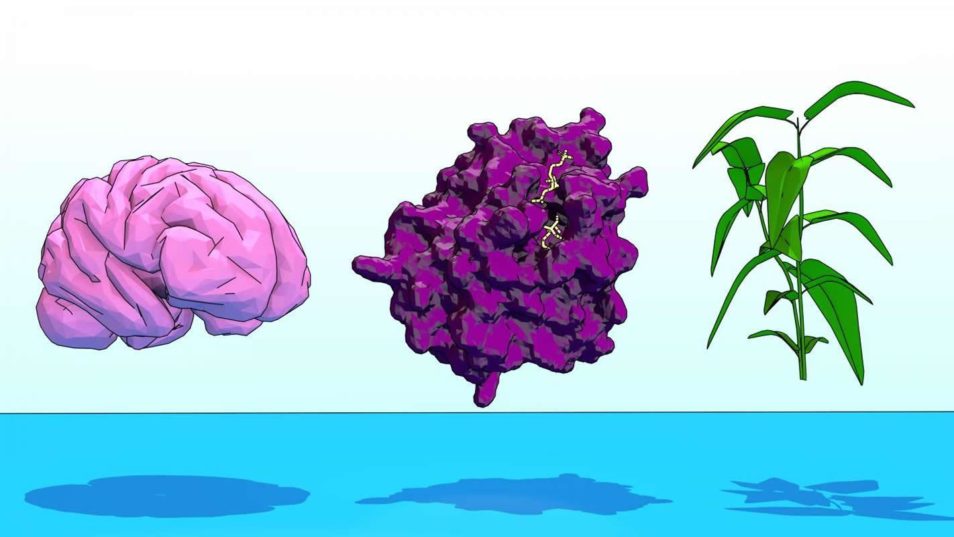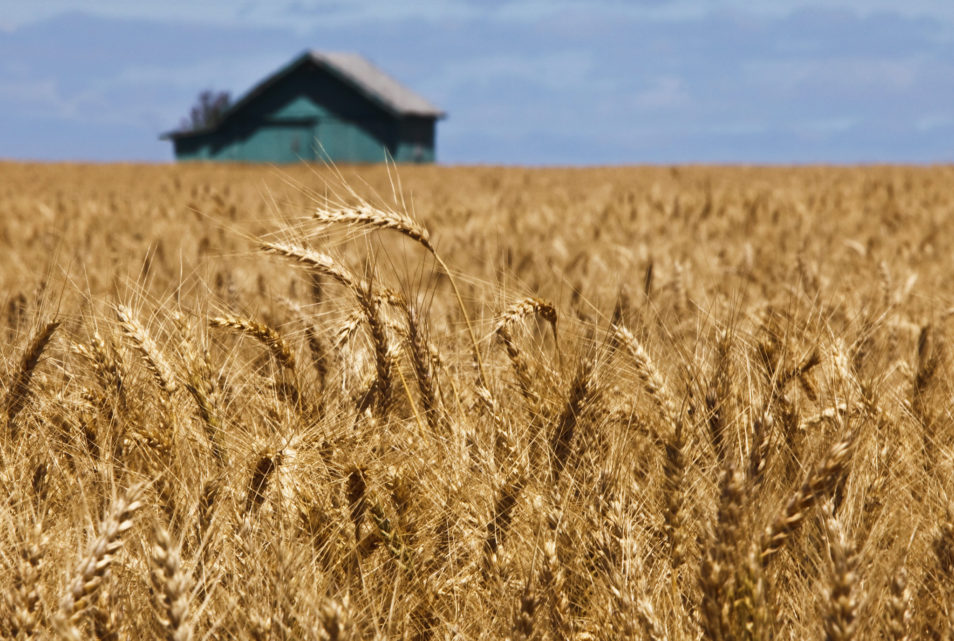
A brain, a cell and a plant are drawn side-by-side.
Certain proteins (like SARM1, pictured centre) may reveal cell death processes among both the animal and plant kingdoms. Image: Xiaoxiao Zhang and Hayden Burdett.
“It’s a bit like cutting off your foot when it’s got gangrene.”
This is how Dr Peter Dodds, our Science Leader, describes self-destruction in plant and animal cells.
Peter is one of a number of scientists involved in breakthrough research just published in Science. The team’s discoveries into self-destructing cells could help us to develop disease-resistant plants, and to create new treatments for neurodegenerative brain diseases.
Like Obi-Wan Kenobi, some cells sacrifice themselves for the greater good
Have you ever heard of self-destructing cells?
‘Apoptosis’ is the term for the orderly process of cell death: it’s how a cell’s genes orchestrate its own demise. Apoptis — also known as ‘programmed cell death’ — comes from the Greek word for ‘falling off’.
It all sounds rather dramatic and Shakespearean. But what exactly is happening inside the cell?
During apoptosis, a series of abnormal changes occur in the DNA of the cell nucleus that eventually leads to the cell’s destruction. It’s been compared to roadies taking down the stage after a concert: proteins called caspases (the roadies) go into action, breaking down parts of the cell (the stage), and prompting the production of enzymes that destroy the nucleus’ DNA.
In humans, apoptosis is a key part of our immune response: infected cells die so that the greater organism can live.
In plants, it’s a defence mechanism against the spread of disease. Chemical signals from inside or outside the plant cell trigger certain genes inside the cell to initiate cell death. The strategy is to kill off the cells so that the disease or fungus won’t spread further on the plant.
That much we know. But there are still many mysteries about how cells self-destruct. For a long time, scientists have been trying to work out how these plants knew they were under attack and how a signal got to the affected area to tell it to die.
“What does the plant do that causes that ‘self-destruct’ response? For a long time this has been a mystery, a black box,” says Peter.

A wheat field and a green house in the background.
Plant diseases account for more than 15 percent of crops losses per year, before they’re even harvested. This new research could help improve food security.
A breakthrough on self-destructing cells
The new research has shed light on this issue. Scientists at the University of Queensland, investigating the animal cell death signalling protein SARM1, realised it shares a similarity with plant proteins. They then made the connection with the plant research we were doing.
“We’ve found common ways human and plant cells bring about cell suicide,” says Professor Bostjan Kobe from the University of Queensland.
“It’s always nice when you find something new and different that gives you an unexpected insight,” adds Peter.
At the same time, researchers at the University of North Carolina were working on a back-to-back paper in the same journal, Science. Like our scientists, they’ve been researching plants, but with a different set of plant proteins. In happy news, their research validates our work.
The research for Science was led by researchers at the University of Queensland, CSIRO, Griffith University and The Australian National University, with a host of international collaborators in the US, UK and Australia. Our researchers — Xiaoxiao Zhang, Jian Chen, Ian Dry and Peter Dodds — worked on the plant side of the research.

Three scientists stand side by side, outside.
Four of our researchers were involved in this groundbreaking research: Peter Dodds, Xiaoxiao Zhang, Jian Chen and (not pictured) Ian Dry.
Alive and cell. How can this discovery help us feed the planet?
This discovery may have important implications for global food security.
“Plant diseases account for more than 15 percent of crops losses per year, before they’re even harvested. Food security is an increasingly relevant problem worldwide,” says Professor Kobe.
“Specific plant resistance genes can protect plants from disease, but how the products of these genes work has been poorly understood. Part of this resistance is that — similar to human neurons — infected cells self-destruct. Knowing how this process happens in neurons, we were able to find how resistance comes about in plants.”
“This takes us a step closer to making effective synthetic resistance genes that can be used to provide additional protection in Australia and worldwide from crop diseases.”
It’s an exciting discovery for improving food security around the world.
The research has been published in Science (DOI: 10.1126/science.aax1911)

